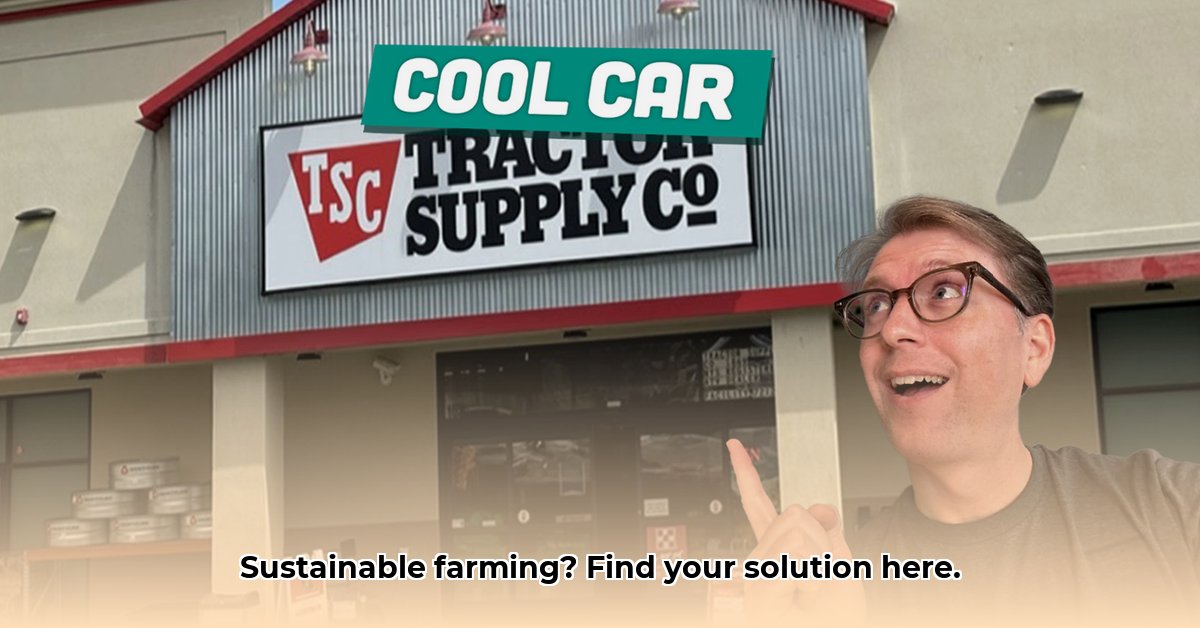
Finding kerosene containers at your local Tractor Supply is common, but its environmental impact necessitates a shift toward sustainable farming practices. This article explores the environmental concerns surrounding kerosene use in agriculture and offers actionable steps for transitioning to cleaner energy solutions. For reliable water storage solutions, check out these water storage options.
Kerosene's Role in Modern Farming: A Necessary Evil?
Kerosene remains a vital energy source for some farmers, particularly in remote areas or for older equipment where electricity is unavailable. Many farmers rely on Tractor Supply for kerosene, but its continued use raises important questions about sustainability. While kerosene offers readily available, cost-effective power in certain situations, its environmental costs must be carefully considered. How can we balance immediate needs with long-term environmental responsibility?
The Environmental Impact of Kerosene: A Detailed Look
Kerosene, a fossil fuel, contributes significantly to greenhouse gas emissions, exacerbating climate change. Accidental spills pose a serious threat, contaminating soil and water, and harming both the environment and crop yields. The entire lifecycle—extraction, refining, transportation, and disposal—leaves a substantial carbon footprint. While readily available at Tractor Supply, the convenience of kerosene must be weighed against its long-term environmental consequences. What are the long-term costs of continued reliance on this fossil fuel?
Sustainable Alternatives: Powering a Greener Future
Fortunately, sustainable alternatives offer viable solutions for powering farms.
1. Solar Power: Solar panels convert sunlight into electricity. Pros include clean energy, reduced emissions, and decreasing costs. Cons include intermittent power generation (dependent on sunlight) and high upfront investment, although government incentives are often available.
2. Biogas: Biogas, produced from agricultural waste (manure, crop residue), reduces waste while generating renewable energy. Pros include waste reduction and renewable energy production. Cons include requiring specialized equipment and potential odor issues.
3. Wind Power: Wind turbines harness wind energy to generate electricity. Pros include clean, renewable energy; Cons include location dependency (requires consistent wind speeds), potential noise concerns, and high initial investment.
4. Electric Tractors: Electric tractors offer zero tailpipe emissions, quieter operation, and reduced air pollution. However, the high upfront cost and limited range are significant drawbacks. "The transition to electric tractors is crucial," says Dr. Anya Sharma, Agricultural Engineer at the University of California, Davis. "While the initial investment is high, the long-term environmental benefits and reduced operating costs make it a worthwhile investment."
The best solution depends on individual farm needs, location, and budget. Careful consideration of these factors is crucial for maximizing effectiveness and minimizing financial strain.
Transitioning to Sustainable Solutions: A Practical Guide
Making the switch requires planning and proactive steps:
1. Energy Audit: Thoroughly assess your current kerosene usage to determine your energy needs.
2. Funding and Incentives: Research government grants, subsidies, tax credits, and low-interest loans supporting renewable energy installations. Your local agricultural extension office can provide valuable resources.
3. Alternative Selection: Choose the most suitable and financially feasible alternative based on your energy audit and available funding.
4. Implementation: Work with reputable installers, following all safety guidelines and manufacturer instructions.
5. Monitoring and Optimization: Regularly monitor your system's performance and make adjustments for optimal efficiency.
It's crucial to comply with local regulations and secure necessary permits throughout the installation process.
Tractor Supply and the Shift Towards Sustainability
Although you'll likely continue to find kerosene containers, Tractor Supply and similar retailers are increasingly offering sustainable energy solutions, including solar panels, wind turbine parts, and informational resources. Engage with their representatives to explore these options.
Conclusion: Embracing a Sustainable Future
Transitioning away from kerosene is essential for environmentally responsible farming. While the shift may present challenges, various resources and support systems can ease the process. By actively seeking advice from experts and exploring the available alternatives, farmers can contribute to a healthier planet and a more sustainable future. The change starts with a simple decision—to consider more than just the readily available kerosene containers at your local Tractor Supply.